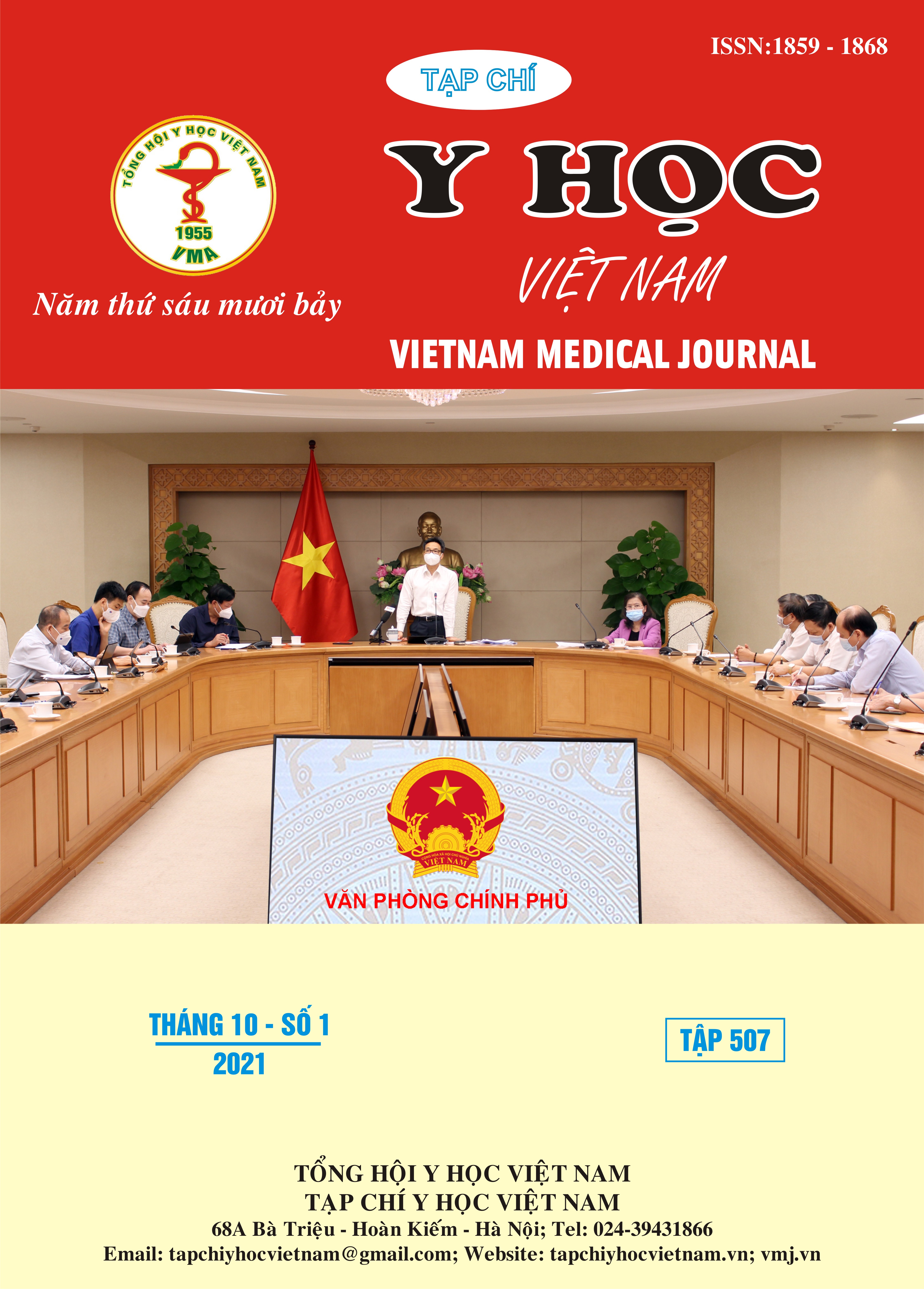CHARACTERISTICS OF BREAST ULTRASOUND IMAGES AFTER ULTRASOUND-GUIDED VACUUM ASSISTED BREAST BIOPSY
Main Article Content
Abstract
Aim: To evaluate breast ultrasound images followed-up after complete excision of benign breast tumors by ultrasound-guided vacuum assisted breast biopsy (VABB). Subjects and methods: This is a prospective and retrospective study of 143 patients with 190 lesions at the Radiology Center - Bach Mai Hospital from August 2018 to August 2021. The patients had undergone VABB device excision of benign breast tumors and been followed up by ultrasonography for 1- 3 years. Results: Within 1 month of follow-up, the main complication was hematoma (87.4%), after 1-3 years of follow-up, most of the lesions did not leave any traces (from 75% after 1-2 years of follow-up to 84.2% after 2 years) or only had minimal scars or minimal parenchyma distortion. There was only one case of residual tumor detected 1 year after excision due to objective factors. The average scar volume after 1 -2 years of follow-up is 0.01 ± 0.03 cm3 and 0.01 ± 0.02 cm3 after 2 years. There is a positive linear relationship between hematoma and scar with tumor volume and number of spicimens and between scar and hematoma after excision. Conclusion: VABB is a safe, effective, highly cosmetic method, accurately diagnose of breast lesions, and it is the choice for the treatment of benign breast tumors.
Article Details
Keywords
benign breast tumor, ultrasound-guided vacuum assisted breast biopsy, VABB
References
2. Jiang Y, Lan H, Ye Q, et al. Mammotome® biopsy system for the resection of breast lesions: Clinical experience in two high-volume teaching hospitals. Exp Ther Med. 2013;6(3):759-764. doi:10.3892/etm.2013.1191
3. Ding Y, Cao L, Chen J, Zaharieva EK, Xu Y, Li L. Serial image changes in ultrasonography after the excision of benign breast lesions by mammotome® biopsy system. Saudi J Biol Sci. 2019;26(1): 178-182. doi:10.1016/ j.sjbs.2018.08.016
4. Hertl K, Marolt-Music M, Kocijančič I, Prevodnik-Kloboves V, Žgajnar J. Haematomas After Percutaneus Vacuum-Assisted Breast Biopsy. Ultraschall Med - Eur J Ultrasound. 2008;30(01):33-36. doi:10.1055/s-2007-963724
5. Papathemelis T, Heim S, Lux MP, Erhardt I, Scharl A, Scharl S. Minimally Invasive Breast Fibroadenoma Excision Using an Ultrasound-Guided Vacuum-Assisted Biopsy Device. Geburtshilfe Frauenheilkd. 2017;77(2):176-181. doi:10.1055/s-0043-100387
6. Lee EK et al. The usefulness of US-guided vacuum-assisted breast biopsy for probably benign lesions. 2005. 68:90-95.
7. Yazici B, Sever AR, Mills P, Fish D, Jones SE, Jones PA. Scar formation after stereotactic vacuum-assisted core biopsy of benign breast lesions. Clin Radiol. 2006;61(7):619-624. doi:10.1016/j.crad.2006.03.008
8. Ding B, Chen D, Li X, Zhang H, Zhao Y. Meta analysis of efficacy and safety between Mammotome vacuum-assisted breast biopsy and open excision for benign breast tumor. Gland Surg. 2013;2(2):69-79. doi:10.3978/j.issn.2227-684X.2013.05.06


